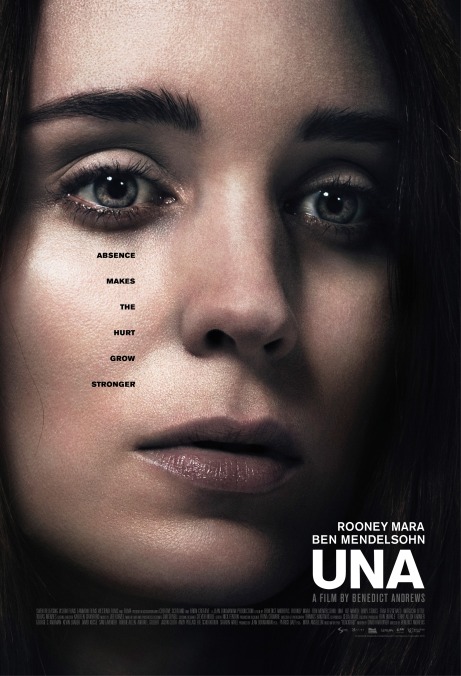Rooney Mara and Ben Mendelsohn struggle to save Una from its adaptation missteps

Turning a play into a movie is often tricky business; there’s a damned-if-you-do, damned-if-you-don’t risk to the undertaking. Based on Blackbird, by Scottish playwright David Harrower, Una somehow avoids neither of the seemingly antithetical, even mutually exclusive pitfalls of moving a story from stage to screen. A tense two-hander about the reunion between a twentysomething woman and the middle-aged man who sexually abused her when she was 13, the play was first staged in 2005 and revived on Broadway last year, with Michelle Williams and Jeff Daniels. Harrower himself wrote the screenplay for Una, which recasts Rooney Mara and Ben Mendelsohn in the lead roles, but he’s stranded his acclaimed work in an odd adaptation dead zone: Its strongest and most faithful scenes are tête-à-têtes that still feel tailored for theatrical performance, while the token concessions to cinematic storytelling—the attempts to “open up” the material with more characters and locations—feel superfluous. Perhaps the latter only serve to underline the “filmed play” quality of the former.
Harrower drew inspiration from the real-life case of a U.S. marine who kidnapped and absconded with an underage British girl he had groomed on the internet. The premise remains potent. Using a photo she’s stumbled upon in a trade magazine, Una (Mara) tracks down the neighbor who seduced her as a teenager. Ray (Mendelsohn), who served four years in prison for statutory rape, now goes by Peter; he’s started a new life under a new name, and has married a woman who may or may not know about his criminal past. “What do you want?” he asks when she shows up unannounced to the factory where he works. It’s the open question that drives Una: whether she’s come to rekindle or confront, to blow up his life or obtain some form of closure.
On stage, the whole story unfolded behind four walls: the drably dressed breakroom where Ray takes Una, the two rehashing everything that transpired between them a lifetime ago. Una preserves that central setting, but it also nervously, detrimentally abandons it at every opportunity, breaking up the long-form conversation with flashbacks to the pair’s illegal encounters (some staged through the increasingly cliché drop-the-soundtrack-out subliminal blips), relocations throughout the building (and, eventually, outside of it), and a subplot involving layoffs at Ray’s job and a co-worker (Riz Ahmed) who gets wedged between the two. Aussie theater director Benedict Andrews, making his filmmaking debut after a career of elaborate Shakespeare, Chekhov, and Tennessee Williams adaptations, shows some grace behind the camera—the opening passage, before the film has revealed the nature of Una’s road trip, has a vague, mysterious unease to it, enhanced by Mara’s signature aloofness. But the film’s most stylistic gestures all feel like transparent attempts to disguise the blatant, inherent theatricality.
It’s a losing battle, and one Una maybe didn’t need to fight. The film is at its most affecting when simply letting its two stars circle each other in isolation, even as Mara—rocking a shaky accent—sometimes plays Una’s loosening emotional grip at a histrionic fever pitch. For the one-on-one scenes, Andrews keeps the shooting and cutting straightforward, even capturing one bathroom monologue in a simple closeup. It’s an approach that roughly approximates just watching actors on a stage, and if that results in moments it’s hard to deny would probably hit harder in a live context, it also keeps the focus on the shifting character dynamics—including the radical, troubling suggestion that Ray acted not out of predatory compulsion but some genuine (if still exploitative) love for a girl too young to consent. Maybe this story just belongs in the theatre, not the theater. But Una demonstrates that when it comes to the staginess of stage adaptations, the cure can be worse than the disease.